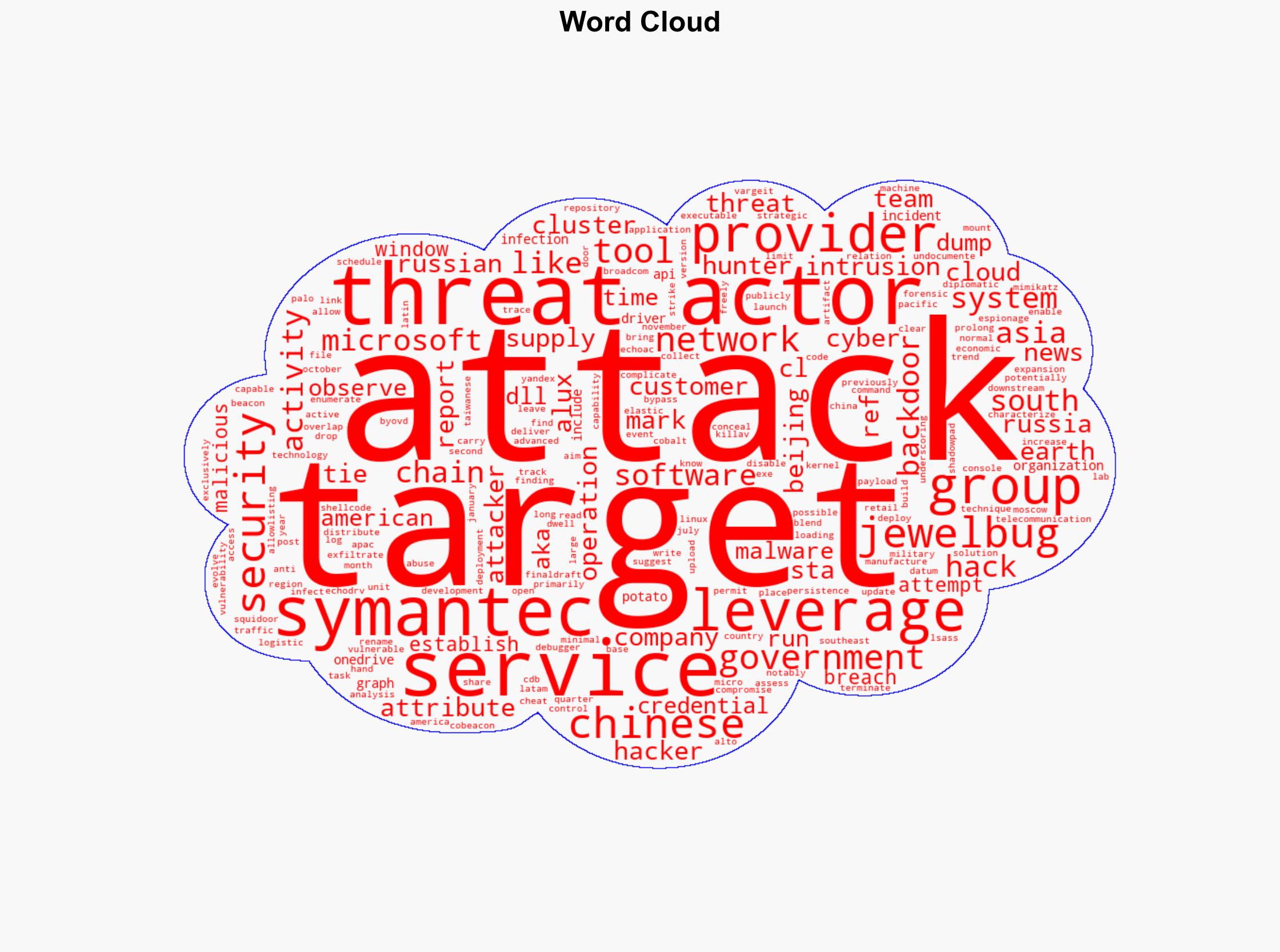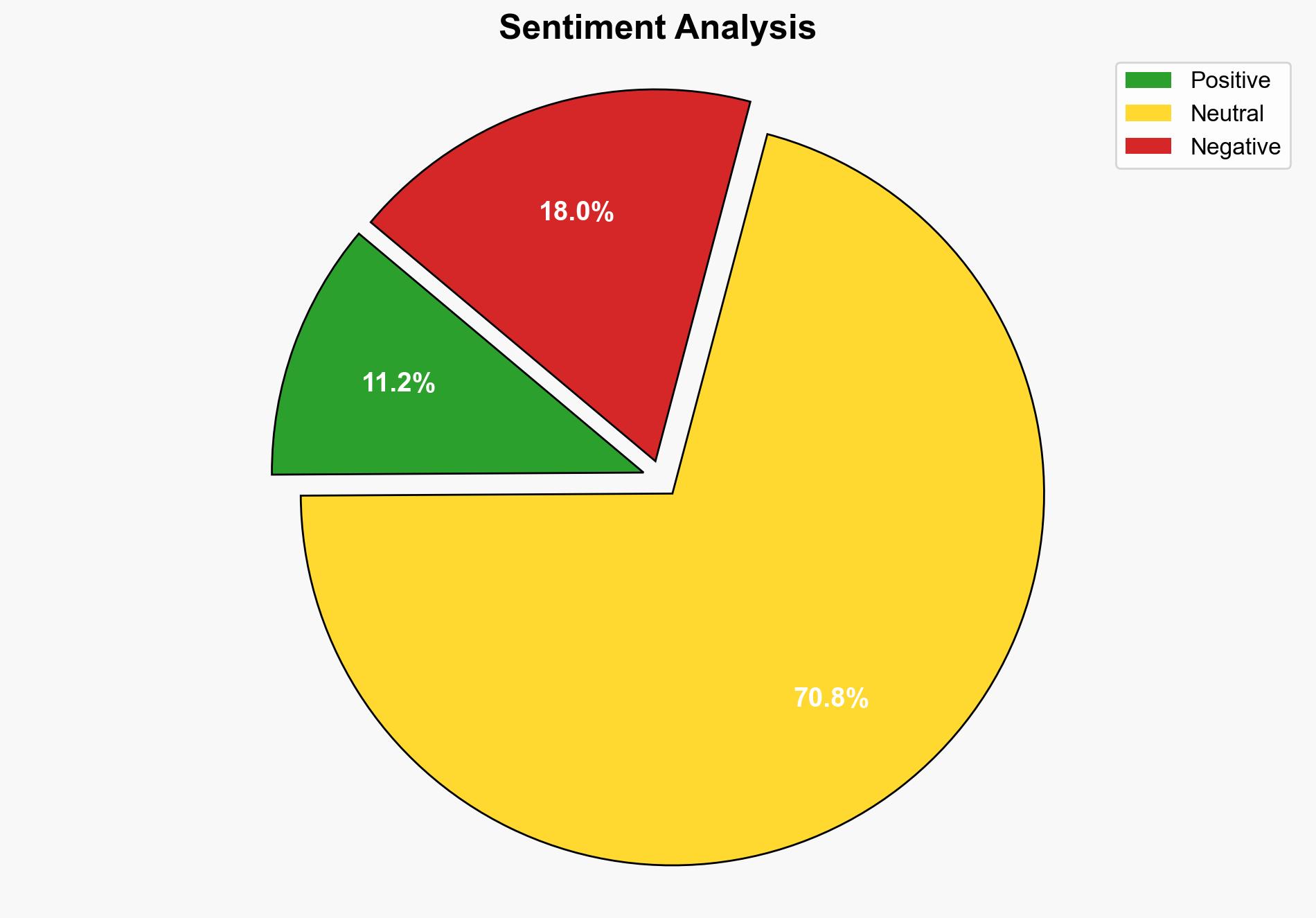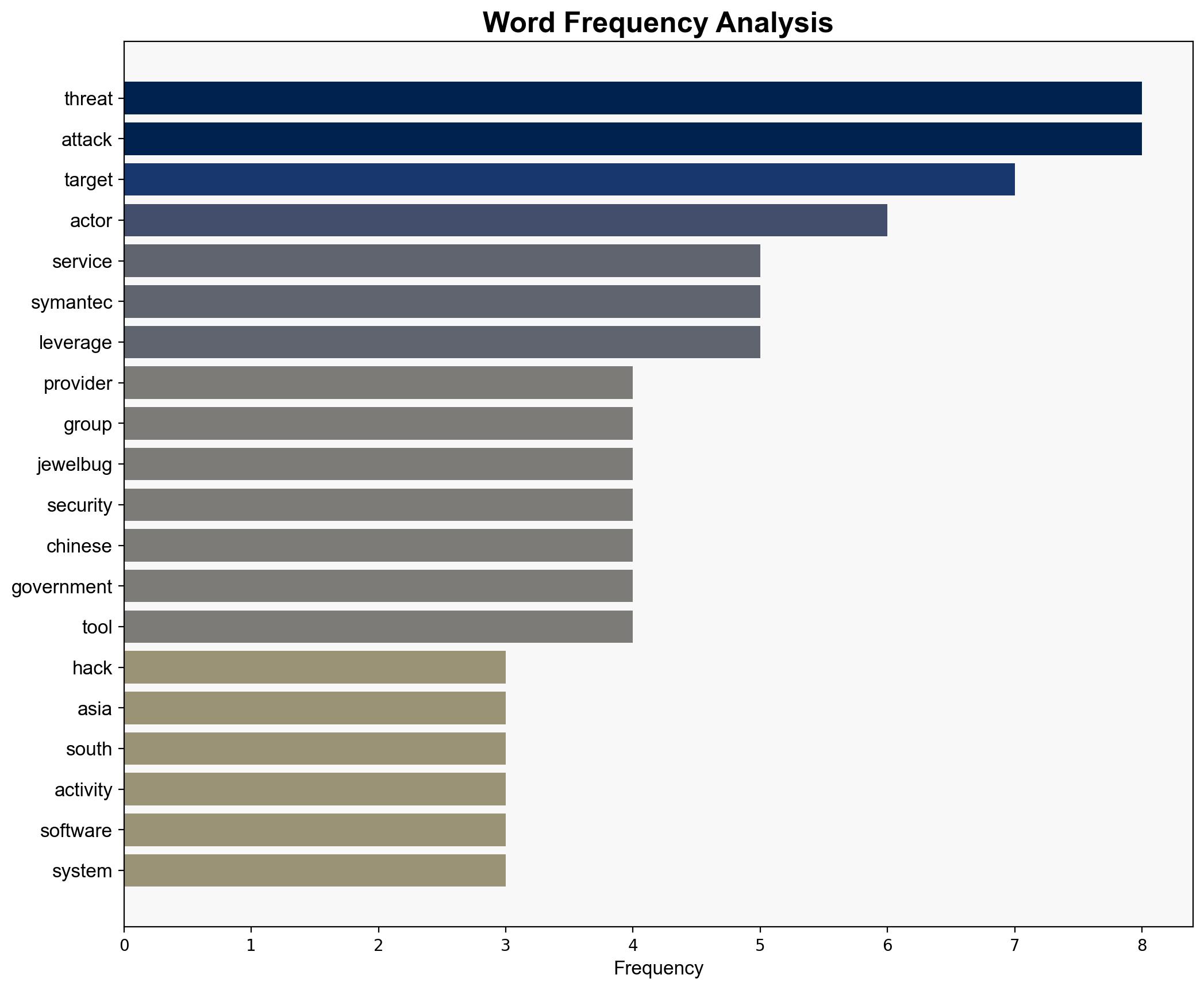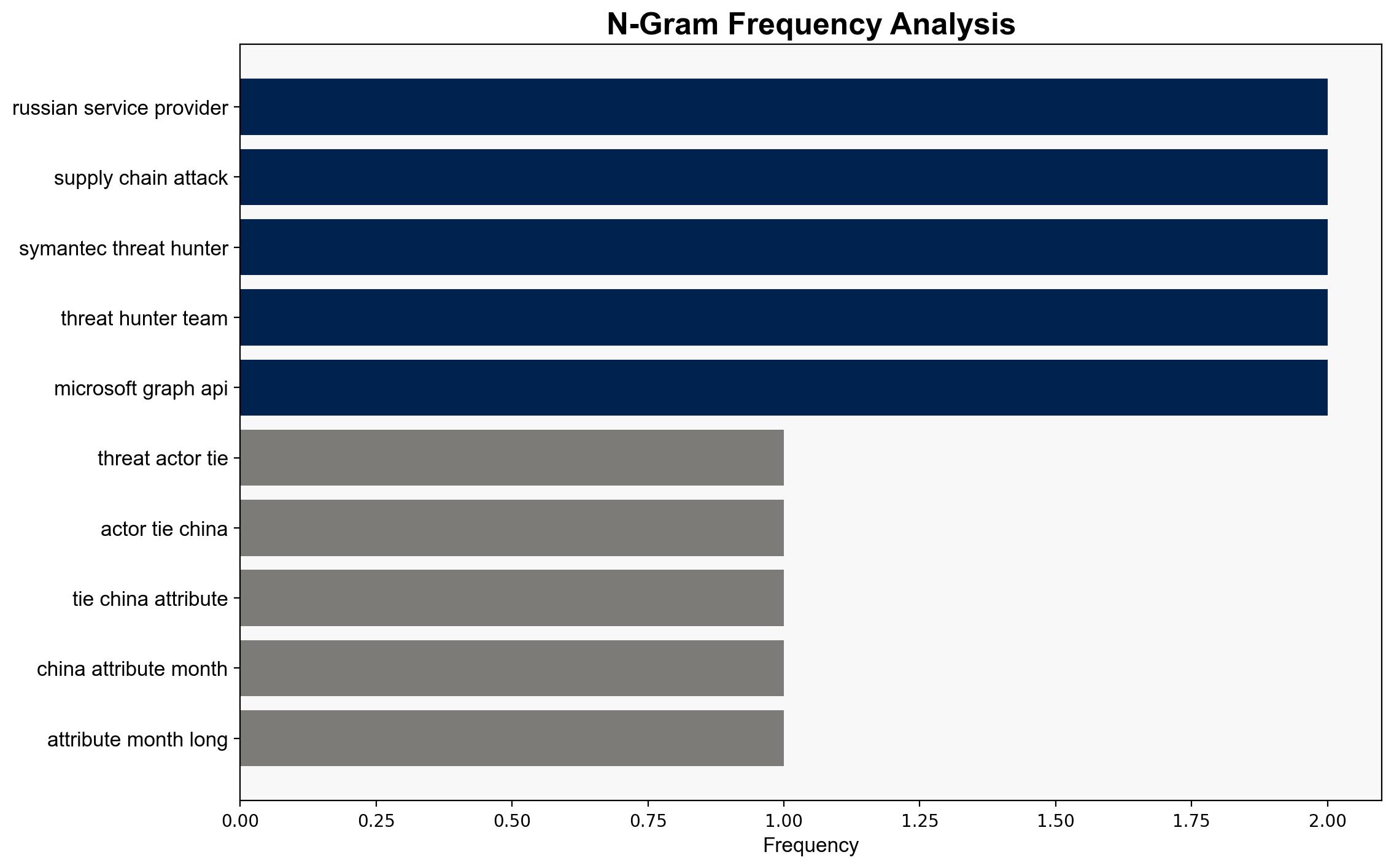Chinese Threat Group ‘Jewelbug’ Quietly Infiltrated Russian IT Network for Months – Internet
Published on: 2025-10-15
Intelligence Report: Chinese Threat Group ‘Jewelbug’ Quietly Infiltrated Russian IT Network for Months – Internet
1. BLUF (Bottom Line Up Front)
The most supported hypothesis is that the Chinese threat group ‘Jewelbug’ has strategically targeted Russian IT networks to potentially leverage supply chain attacks, reflecting broader geopolitical tensions and espionage objectives. Confidence in this assessment is moderate due to limited direct evidence of intent. Recommended actions include enhancing cybersecurity measures in critical infrastructure and fostering international cooperation to address state-sponsored cyber threats.
2. Competing Hypotheses
1. **Hypothesis A**: Jewelbug’s infiltration of Russian IT networks is primarily aimed at conducting espionage to gather intelligence on Russian technological capabilities and geopolitical strategies.
2. **Hypothesis B**: The intrusion is part of a broader strategy to establish footholds for future supply chain attacks, potentially targeting Russian allies and partners in Southeast Asia and South America.
Using the Analysis of Competing Hypotheses (ACH) 2.0, Hypothesis B is better supported due to the observed pattern of targeting service providers and the deployment of backdoors capable of facilitating supply chain attacks. The use of legitimate cloud services for command and control also suggests a focus on maintaining long-term access rather than immediate data exfiltration.
3. Key Assumptions and Red Flags
– **Assumptions**: It is assumed that Jewelbug’s activities are state-sponsored and aligned with Chinese national interests. Another assumption is that the use of advanced malware indicates a high level of technical capability and intent to remain undetected.
– **Red Flags**: The lack of direct attribution to Chinese state actors and the potential for false flag operations. The reliance on open-source reporting and the absence of corroborating intelligence from other sources are also concerns.
4. Implications and Strategic Risks
The infiltration poses significant risks to Russian national security, particularly if supply chain attacks are executed. This could lead to disruptions in critical infrastructure and damage diplomatic relations between Russia and China. The incident underscores the vulnerability of global supply chains to cyber threats, potentially escalating tensions in the Asia-Pacific and Latin American regions.
5. Recommendations and Outlook
- Enhance cybersecurity protocols across Russian IT networks, focusing on detecting and mitigating supply chain vulnerabilities.
- Engage in diplomatic dialogues with China to address cyber espionage concerns and establish norms for state behavior in cyberspace.
- Scenario Projections:
- **Best Case**: Improved cybersecurity measures prevent further infiltration, and diplomatic efforts lead to a reduction in cyber hostilities.
- **Worst Case**: Successful supply chain attacks lead to widespread disruption and deterioration of Russia-China relations.
- **Most Likely**: Continued low-level cyber operations with periodic escalations, necessitating ongoing vigilance and cooperation with international cybersecurity entities.
6. Key Individuals and Entities
No specific individuals are mentioned in the intelligence. Key entities include the Chinese threat group ‘Jewelbug’, Broadcom’s Symantec, Palo Alto Networks, Trend Micro, and Elastic Security Lab.
7. Thematic Tags
national security threats, cybersecurity, counter-terrorism, regional focus




